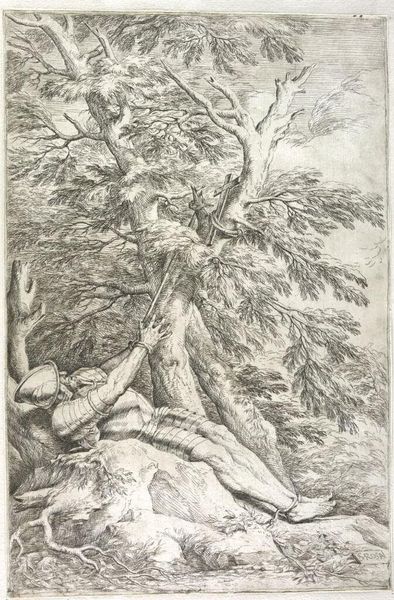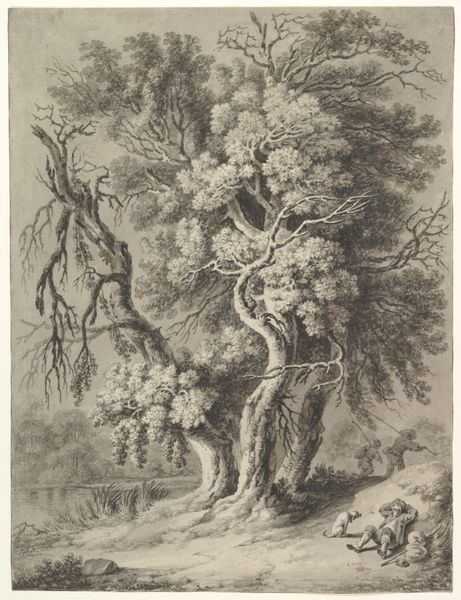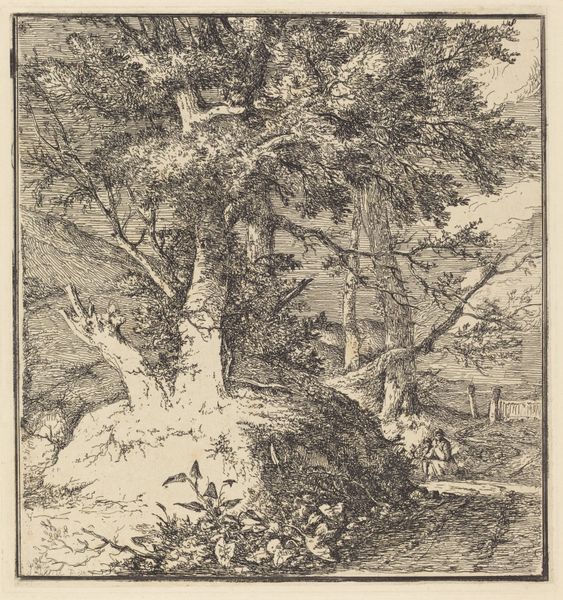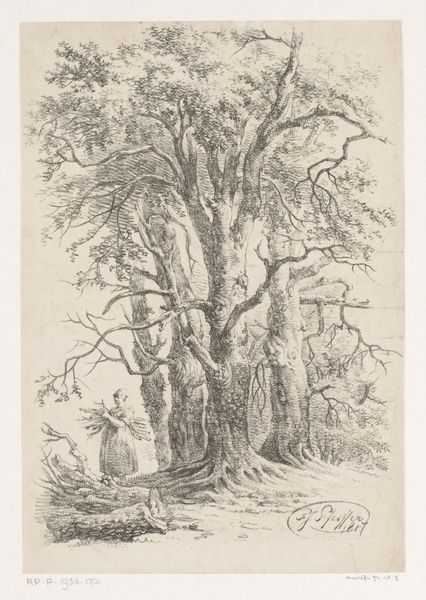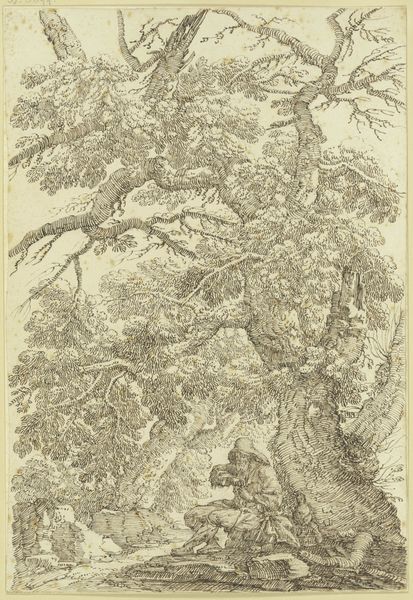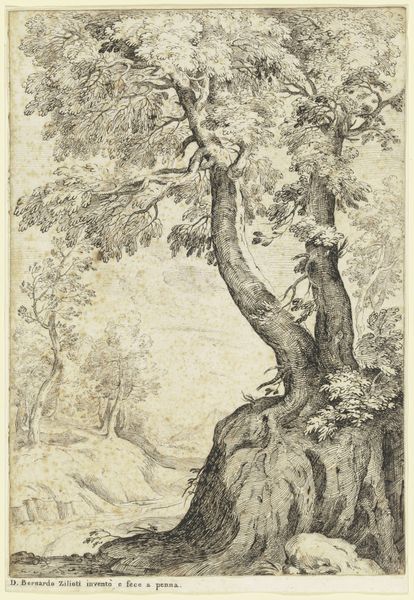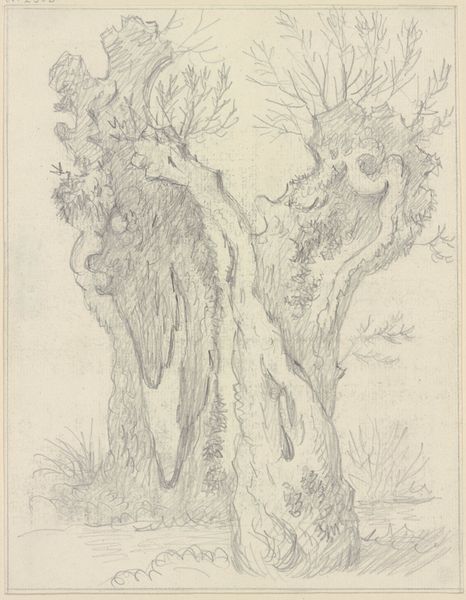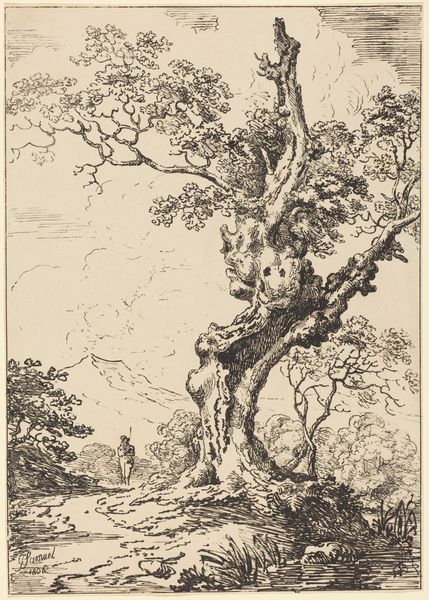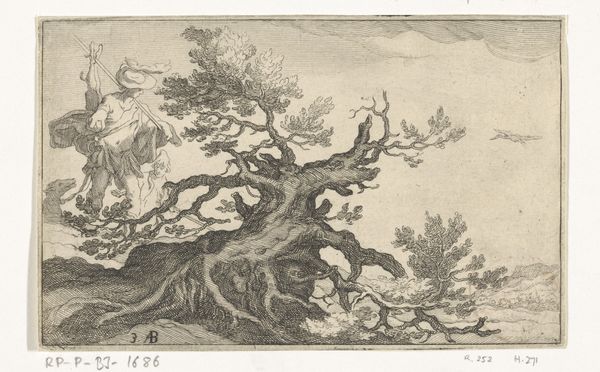
Saint William of Maleval, hands tied with rope fastened to a tree 1661
0:00
0:00
etching, engraving
#
baroque
#
etching
#
landscape
#
etching
#
figuration
#
history-painting
#
engraving
Dimensions: Sheet: 13 7/16 x 11 5/16 in. (34.2 x 28.8 cm)
Copyright: Public Domain
Salvator Rosa made this print of Saint William of Maleval sometime in the 17th century. It’s done with etching, a printmaking process that depends on the corrosive action of acid to make lines in a metal plate. Look closely, and you’ll see that the entire composition is built up from these tiny etched lines, which hold the ink when the print is made. See how Rosa uses the fineness and density of the lines to create areas of light and shadow, conjuring texture? Think about how the artist's labor intensive work is captured in the finished print. Prints like this one allowed Rosa to circulate his ideas widely. They were luxury multiples, bought by collectors to appreciate in albums or framed on the wall. This etching is not just an image, but also evidence of a skillful hand and the cultural networks that supported it. Appreciating the ‘how’ of this printmaking process, the hand skills, the labor and its distribution, all these enrich our experience of the artwork.
Comments
No comments
Be the first to comment and join the conversation on the ultimate creative platform.
